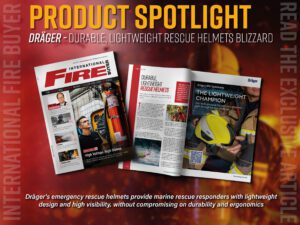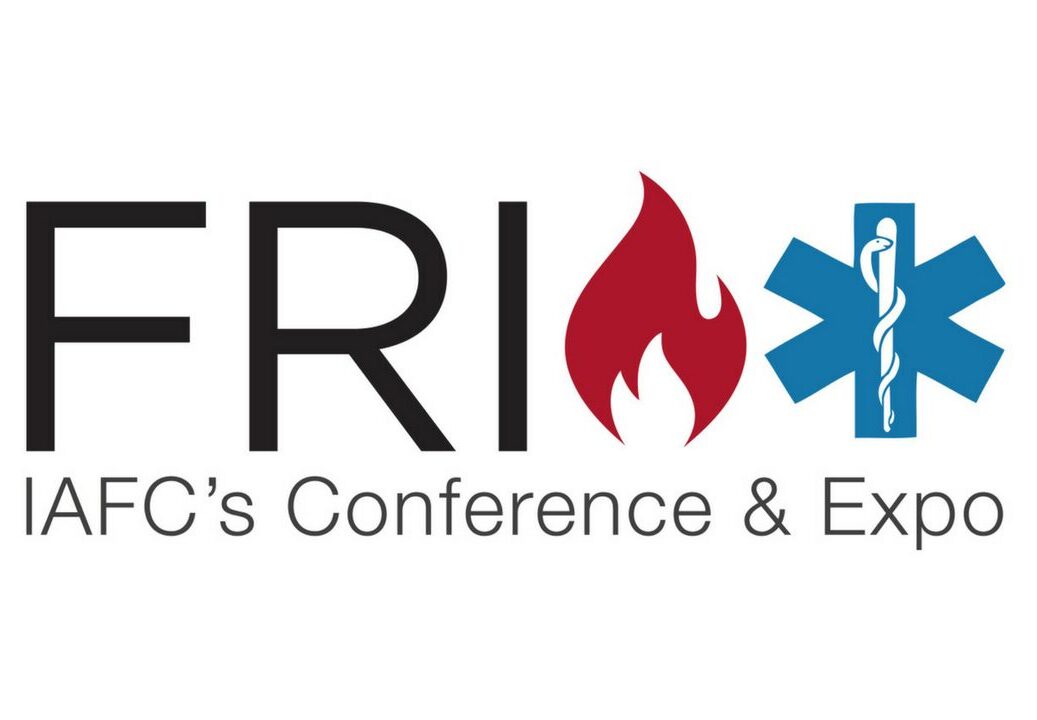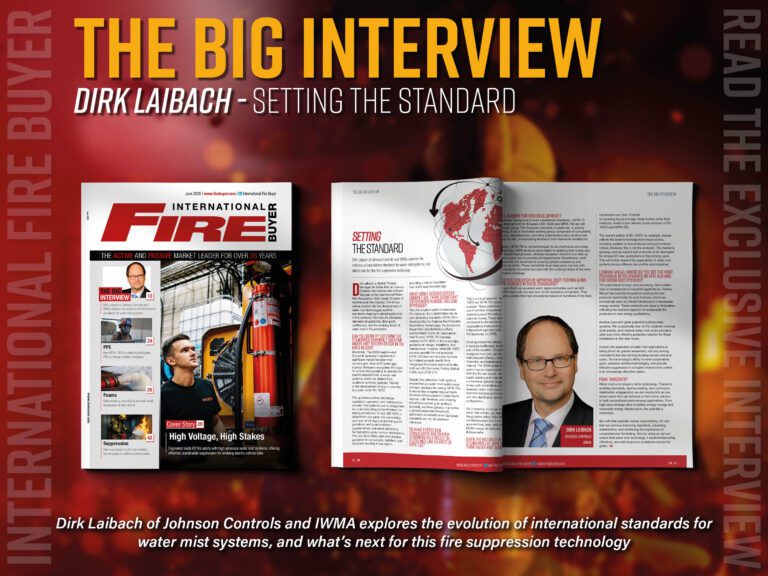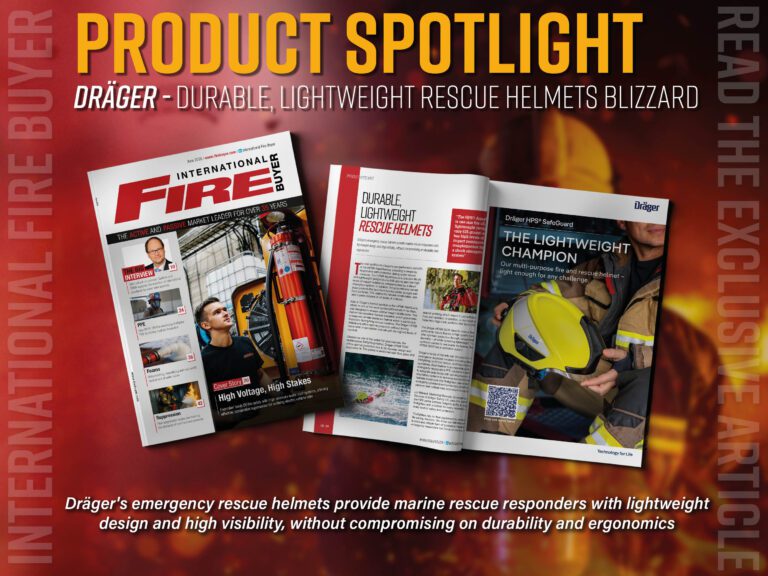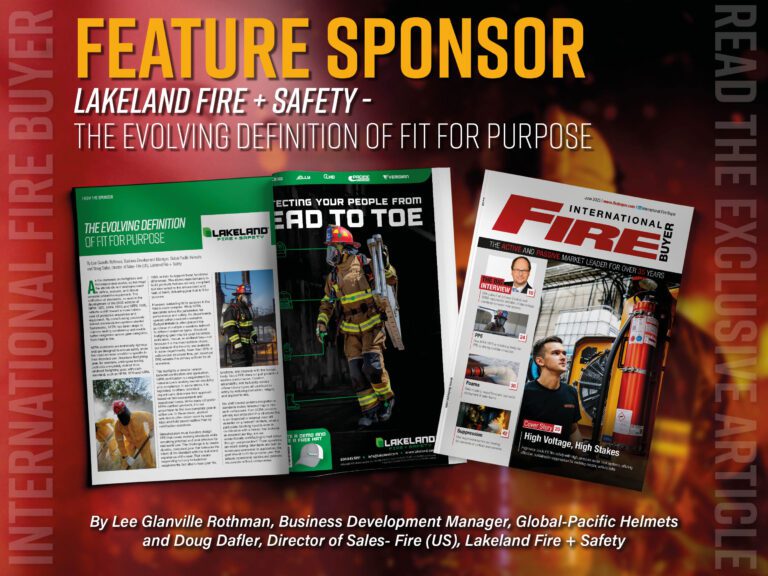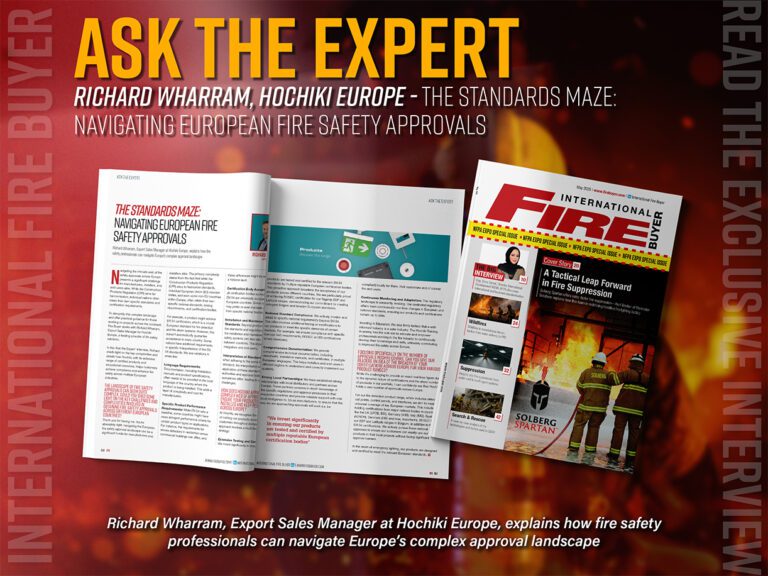International Fire Buyer takes you through the evolution, innovation and legislative practices of firefighting foams and their impact on the environment
There are many integral fire truck systems that provide lifesaving resources and tools at the scene of an emergency. Fire-fighting foam systems are one such system, designed to improve the fire-extinguishing capabilities of water, enhancing on-scene efficiencies and promoting water use reduction. Despite the growing use among departments globally, there is some confusion as to what foam systems can offer, when to use foam systems and the types of foam required for varying emergency response needs.
Today, Firefighters are faced with an increasing number of flammable liquid and hazardous vapour risks. From traffic accidents to industrial incidents, many situations can result in a flammable liquid or hazardous vapor occurrence. Fire-fighting foam is made up of a mass of small bubbles of lower density than most flammable liquids and water. Foam is a blanketing and cooling agent produced by mixing air into a foam solution that contains water and foam concentrate.
A foam system allows a specific amount of foam to be mixed with water through the fire apparatus pump mechanisms. Anytime water is used, a foam system can be activated to improve water’s effectiveness and help expedite firefighting capabilities.
In a structure fire, water is used to remove heat from the fire by absorbing the heat in the room and cooling the available fuel. However, rather than directly contributing to the cooling of fuel below the temperature required for sustained burning, a large portion of the water hits the floor after passing through the atmosphere.
Foam concentrate, combined with water and compressed air forms a fire extinguishing agent that greatly reduces surface tension compared to that of plain water, enabling the solution to penetrate burning fuels much faster and more efficiently.
Class ‘A’ foam is used for Class ‘A’ fires, which include solid combustibles such as paper, wood, cloth and some plastics. Many Class ‘A’ foams are environmentally friendly and biodegradable when used in appropriate quantities.
Class ‘A’ foam typically runs at 0.3%, 0.5% or 1%. These are the most effective percentages based upon the foam manufacturer’s recommendations; any other percentages are considered running the foam too lean, or too rich, and are not effective. The different percentages are directly related to the size and type of fire at an emergency scene, as well as the equipment being used to apply the water and foam.
Class ‘B’ foam is used for Class ‘B’ fires, which are fires that involve flammable liquids such as alcohol, ether, oil, gasoline or grease. Class ‘B’ fires are best extinguished by smothering or applying a blanket of Class ‘B’ foam, which is meant to float on the surface of burning fluid. When Class ‘B’ foams are sprayed with water, the foam rises to the surface to create a vapor barrier to cut off the fuel source. Class ‘B’ foams require special clean-up after a fire by state or federal authorities.
Class ‘B’ foam typically runs at 1%, 3% or 6%. These are the most effective percentages based upon the foam manufacturer’s recommendations. Much like Class ‘A’ foams, the percentages are directly related to the fire size and type as well as the equipment used.
Departure from traditional foams
Water has long been a universal agent for suppressing fires but is not necessarily the best choice for all cases and certain classes of fires.
Firefighting foams are a fire-extinguishing agent for flammable and combustible liquids. Unlike other extinguishing agents such as water, dry chemicals, CO2, etc., a stable foam can extinguish a flammable or combustible liquid fire.
They do this by the combined mechanisms of cooling, separating the flame/ignition source from the flame/product surface, suppressing vapors, and smothering the fire until it’s extinguished.
Dangers of PFAS
Conventional firefighting foams contain several dangerous components: A combination of water, pressurised air, polyfluoroalkyl (PFAS), or perfluorochemicals (PFCs) substances. The mixture of these substances is more effective at controlling fires than just water, especially fuel-based fires. However, unlike water and air, PFAS and PFCs are human-made chemicals that do not break down over time.
Once dispersed, the chemicals can reside in a human’s body, going undetected for years and run into local water sources without anyone realizing it. (“Firefighting foam linked to health issues like cancer,” 2019) Firefighters run a considerable risk of cancer when exposed to these harmful chemicals.
Also, if humans consume water or food products contaminated with PFAS or PFCs, they could develop serious health problems such as:
- Testicular and kidney cancer
- Thyroid disease
- Ulcerative colitis
- Other health issues, such as hormonal imbalances
Senate Bill No.1044
Alongside evolving legislation around this topic, a new Senate Bill No.1044 will come into effect in 2022 which manufacturers and fire industry professionals must be aware of.
Existing law authorises the State Fire Marshal to make such changes as may be necessary to standardise all existing fire protective equipment throughout the state and requires the State Fire Marshal to notify industrial establishments and property owners having equipment for fire protective purposes of the changes necessary to bring their equipment into conformity with standard requirements.
This bill, commencing January 1, 2022, would require any person, as defined, including a manufacturer, as defined, that sells firefighter personal protective equipment to any person to provide a written notice to the purchaser at the time of sale if the firefighter personal protective equipment contains intentionally added perfluoroalkyl and polyfluoroalkyl substances (PFAS).
The bill would require the seller and the purchaser to retain a copy of the written notice on file for at least 3 years and to furnish the notice and associated sales documentation to the Attorney General, a city attorney, a county counsel, or a district attorney within 60 days upon request, as provided.
The bill would authorise the Attorney General, a city attorney, a county counsel, or a district attorney to request from a manufacturer, and the bill would require the manufacturer to provide, a certificate of compliance that certifies that the manufacturer is in compliance with these provisions.
The bill would provide that a violation of these requirements is punishable by a specified civil penalty upon an action brought by the Attorney General, a city attorney, a county counsel, or a district attorney.
The bill, commencing January 1, 2022, would prohibit a manufacturer of class B firefighting foam from manufacturing, or knowingly selling, offering for sale, distributing for sale, or distributing for use in this state, and would prohibit a person from using in this state, class B firefighting foam containing intentionally added PFAS chemicals.
The bill would establish exemptions from this requirement, including a limited-term waiver, as prescribed. The bill would require a person that uses class B firefighting foam containing intentionally added PFAS chemicals to report use of the chemical, or report if there is a release to the environment, to the State Fire Marshal.
This bill would require the State Fire Marshal to impose a fee on a person applying for the waiver or submitting the report that does not exceed the reasonable costs of administering the waiver or reporting provisions, as provided.
The bill would require a manufacturer to provide a specified notice to persons that sell the manufacturer’s products in the state and to recall prohibited products, as provided.
The bill would provide that a violation of these provisions is punishable by a specified civil penalty, upon an action brought by the Attorney General, a city attorney, a county counsel, or a district attorney.
The bill, commencing January 1, 2022, would prohibit a person, as defined, from discharging or otherwise using for training purposes class B firefighting foam that contains intentionally added PFAS chemicals, and would provide that a violation of this prohibition is punishable by a specified civil penalty, upon an action brought by the Attorney General, a city attorney, a county counsel, or a district attorney.
This changing in legislation, coupled with the stigma around firefighting foams and chemicals are all additional reason for the firefighting industry to be extra vigilant and prepare in training and front line response eco-friendly foam alternatives that are still just as efficient.
Commentary: Dr. Ian Ross, Technical Director and Global PFAS Practice Lead at Tetra Tech
Increasing attention to the environmental and human health effects of fluorosurfactants present in C8 (long chain) and C6 (short chain) firefighting foams, termed per- and polyfluoroalkyl substances (PFASs), is leading to the development of increasingly conservative (low) regulatory levels in drinking water globally. The ongoing use of firefighting foams containing C8 and C6 fluorosurfactants, termed aqueous film forming foams (AFFF) and fluoroprotein foams (FFFP and FP) is under significant scrutiny as numerous drinking water supplies are identified to be contaminated by PFAS, with 6 million Americans impacted in 2016. PFAS are all extremely persistent in the environment, so have been termed “forever chemicals” and are the subject of a recent Hollywood film called ‘Dark Waters’.
There are a growing number of lawsuits are being filed against polluters by communities and businesses impacted by PFAS contamination. For instance, some $212M was recently paid to a PFAS-impacted community in Australia, located along a 9-mile PFAS groundwater plume, caused by use of firefighting foams, which impacted the drinking water supply to the town of Katherine.
Following publication of the new, significantly lower, UK drinking water standards for PFAS earlier this year, in addition to a ban of training and testing using C8 foams in Europe from 2020, do many organisations know which PFASs are contained within their fire suppression systems or understand the implications of holding these foams?
Commentary: Dennis Kennedy, Executive Vice President of Amerex Corporation, a division of McWane
Over the last few, short years, the industry has radically changed and will continue to change, as all fluorinated foams are re-formulated to match the performance of the longer chain surfactants using the new short chain chemistry. I am not aware of any debate on this subject; the foam industry is changing formulations and re-testing and listing these revised formulations based on the change to new chemistry. Solberg did this, and the others have either done this as well or are in the process of changing.
At the same time, the fire performance of fluorine free foam concentrates is improving. As everyone associated with the firefighting foam industry can attest to, the firefighting foam industry has been undergoing significant changes since 2001, when 3M exited the foam business.
Another point of debate from the fluorinated foam industry is that only fluorinated foams can best extinguish a large tank fire. Although this has been repeatedly shown to be false by emergency response partners, we elected to conduct a large tank demonstration at the BEST complex in Beaumont, Texas at the beginning of the transition to FFF, using the same tank, fuel and non-air aspirating nozzles, with foam application rates as used by other foam suppliers for their demonstrations of their fluorinated foams.
As with the other fire tests and demonstrations, no discernable difference in fire performance was seen. The industry must rally together for social and environmental responsibility.
To stay up to date on the latest, trends, innovations, people news and company updates within the global fire market please register to receive our newsletter here.
Media contact
Rebecca Morpeth Spayne,
Editor, International Fire Buyer
Tel: +44 (0) 1622 823 922
Email: [email protected]









